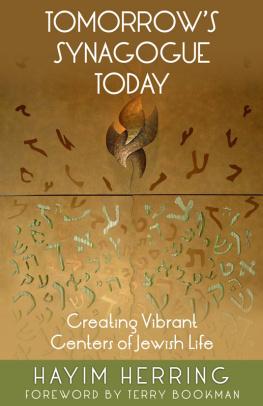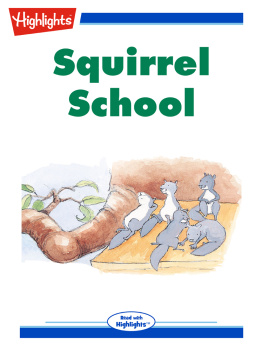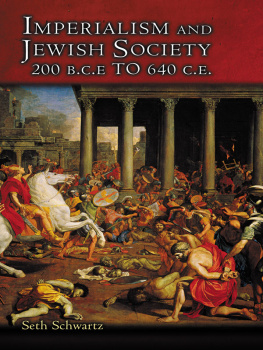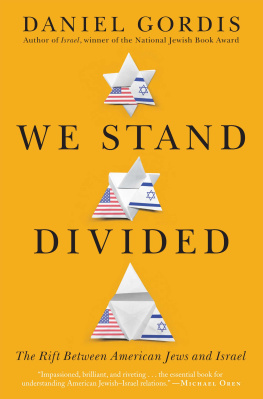Acknowledgments
To all who talked with me about the Tree of Life shooting: Thank you. You make me want to recycle John Allisons spiel from a footnote in the Prologue: Yes, Pittsburghers have a certain decency. But its not the midwestern variety, which in my (limited) experience is about being nice and not talking about unpleasant things. Pittsburghers, to overgeneralize, have more of the decency of empathythey will get nebby, they will try to do a nice thing for someone.
Although my family now lives mostly in the diaspora, a few remain in Squirrel Hill. Thank you cousins Stefi Kirschner and Gil Schneider and, for your open-door (and open-bar) policy, Aunt Alece and Uncle Dave Schreiber.
Between interviews, I passed many hours at Amazing Books & Records, in the heart of Squirrel Hill. Proprietor Eric Ackland is an educated man and a deep soul, and every time I dropped by his store, he said something that I knew would improve my book. I count him as a friend.
A dedicated group of journalists worked this story in the first days, before I arrived. I would like to single out Emma Green of The Atlantic, Peter Smith of the Pittsburgh Post-Gazette (where the whole Pulitzer-winning team did remarkable work), and publisher Jim Busis and reporters Adam Reinherz and Toby Tabachnick of the Pittsburgh Jewish Chronicle. Other professionals I am honored to work with: agents David Kuhn, Nate Muscato, and Allison Warren; research assistants and fact-checkers Annie Rosenthal, Elliot Lewis, Eve Sneider, Karys Rhea, Maggie MacFarland Phillips, Marie-Rose Sheinerman, and Ani Wilcenski; and fellow writers Gavriel Savit, Ben Cohen, Rand Richards Cooper, and Michael Scott Alexander, who read early drafts. At Knopf, editor Jonathan Segal shaped this book, paring away anything that took the focus off Squirrel Hill. I am also grateful to his assistants, Samuel Aber and then Erin Sellers. Janet Biehl expertly copyedited the manuscript, and Ellen Feldman, who has Squirrel Hill ancestry herself, was the ideal production editor. Text designer Cassandra Pappas, jacket designer Jennifer Carrow, and mapmaker Ariana Killoran made this book into an object even more evocative of the neighborhood its about. Attorney Celeste Phillips offered wise suggestions that went beyond legal matters.
I got financial support from the Covenant Foundation, the Pulitzer Center, and the Yale Program for the Study of Antisemitism. I am fortunate to have a group of old friends who keep me thinking about topics like community, faith, friendship, and resilienceand so in their way have contributed to this book. In order of how long Ive known them: Adam Ondricek, Derek Slap, Seth Lobis, Doug McKay, Jerry Vildostegui, Jed Shugerman, Willard Spiegelman, Jonathan Pitt, Tim Holahan, Andy Boone, Matt Higbee, Jeff Sudmyer, Tom Bontly, Matt Polly, Liam Brennan, and Mike Hurwitz. Dave Cullen and Patrick Radden Keefe offered encouraging words, drawing on their own reporting experience, bucking me up at key moments. Todah to the members of Beth ElKeser Israel, in New Haven, Connecticutespecially Tamara Schechter.
I wish to single out for thanks one Yale colleague in particular, the recently retired Fred Strebeigh. His concern for others, and for avoiding clichs in ones prose, is unsurpassed.
This book began as a special episode of Unorthodox, the podcast I host for Tablet magazine. This project belongs to all my Tablet colleagues, but especially to those who work with me on Unorthodox: Stephanie Butnick, Liel Leibovitz, Josh Kross, Sara Fredman Aeder, and Robert Scaramuccia. Paul Ruest engineered the show for years and will forever be part of it. To the J-Crew, our enthusiastic chorus of podcast listeners, who help us wrestle with questions timely (Do Jews prefer Saran wrap or aluminum foil?) and timeless: thanks for Thursdays.
I began life as an Oppenheimer and then joined up with the Fremmerssome serious good luck. I thank them all, wherever they are, from Springfield to St. Paul, from Austin to Chicago, from the Lower East Side to the Upper West Side. The home I kept leaving for Pittsburgh is the one I share with Cyd Oppenheimer and our children, Rebekah, Elisabeth, Klara, Anna, and David. The family consensus is that real writers write fiction, but the other consensus is looove. So they forgave my absences and even inquired after the people I was writing about. Guys, thanks for walking the dogs when I couldnt, and for letting me win at Scrabble sometimes. For you, Ill try writing a novel.
Also by Mark Oppenheimer
Knocking on Heavens Door: American Religion in the Age of Counterculture
The Bar Mitzvah Crasher: Road-tripping Through Jewish America (originally published as Thirteen and a Day )
Wisenheimer: A Childhood Subject to Debate
The Newish Jewish Encyclopedia: From Abraham to Zabars and Everything in Between (with Stephanie Butnick and Liel Leibovitz)
A Note About the Author
M ark O ppenheimer is the author of five books, including Knocking on Heavens Door: American Religion in the Age of Counterculture and The Newish Jewish Encyclopedia. He was the religion columnist for The New York Times from 2010 to 2016 and has written for The New York Times Magazine, GQ, Mother Jones, The Nation, and The Believer, among other publications. The host of Tablet magazines podcast Unorthodox, Oppenheimer has taught at Stanford, Wellesley, and Yale, where since 2006 he has directed the Yale Journalism Initiative. He lives with his family in New Haven, Connecticut.
1
The Attack
W hen did it begin, this hatred of Jews?
Some would say that all hatred began in the Garden of Eden, when the serpent brought evil into the world, or at the Tower of Babel, when God punished humans for their hubris by destroying their common tongue, making them strangers to one another. Others would point to the New Testament, which, as uncomfortable as it is to admit today, does seem to lay the death of Jesus at the feet of treacherous Jews. Or we can blame the early theologians in the centuries after Jesus, who said things like, The Jewish people were driven by their drunkenness and plumpness to the ultimate evil; they kicked about, they failed to accept the yoke of Christ, nor did they pull the plow of his teaching.Although such beasts are unfit for work, they are fit for killing. And this is what happened to the Jews: while they were making themselves unfit for work, they grew fit for slaughter. Over the centuries, Christians would point to the Jews own stubbornness as the cause of others antipathy toward them. There was the Jew-hating of the Quran (Allah has cursed them on account of their unbelief); of the medieval Europeans, with their superstition that the Jews drank the blood of Gentile children; of the Nazis; of the Communists; of genteel Etonians; of Afrocentric Black nationalists; of East Asian superstition; of rural American folk belief; of Islamic radicalism; of its left-wing apologists; of right-wing populists.
But if what we are asking is how the attack on Tree of Life begannot whom to blame, not who bears responsibility, since ultimately the killer doeswe may start with Carolyn Ban, a Smith-, Harvard-, and Stanford-trained scholar of the European Union, who in 1997 moved to Pittsburgh to become the dean of the University of Pittsburghs Graduate School of Public and International Affairs. Fifty-four years old and single, she had relocated a lot in her academic career, and in Pittsburgh she at last felt ready to stay put. Within a year, I said, I dont think I am moving anymore, she recalled. This place feels like home. And I went looking for a choral group. Ban had been raised in a nonobservant Jewish household, but in 1994 she had heard a concert of Jewish choral music in Albany and been blown away. Ban was not a choral singer, but she decided, I am going to do this, and I loved it. It connected me to Judaism. When she relocated to Pittsburgh, she found a singing group, but it didnt last. I needed a place to sing.











![Thorne - Thats not how you wash a squirrel : [a collection of new essays and emails]](/uploads/posts/book/95081/thumbs/thorne-that-s-not-how-you-wash-a-squirrel-a.jpg)
